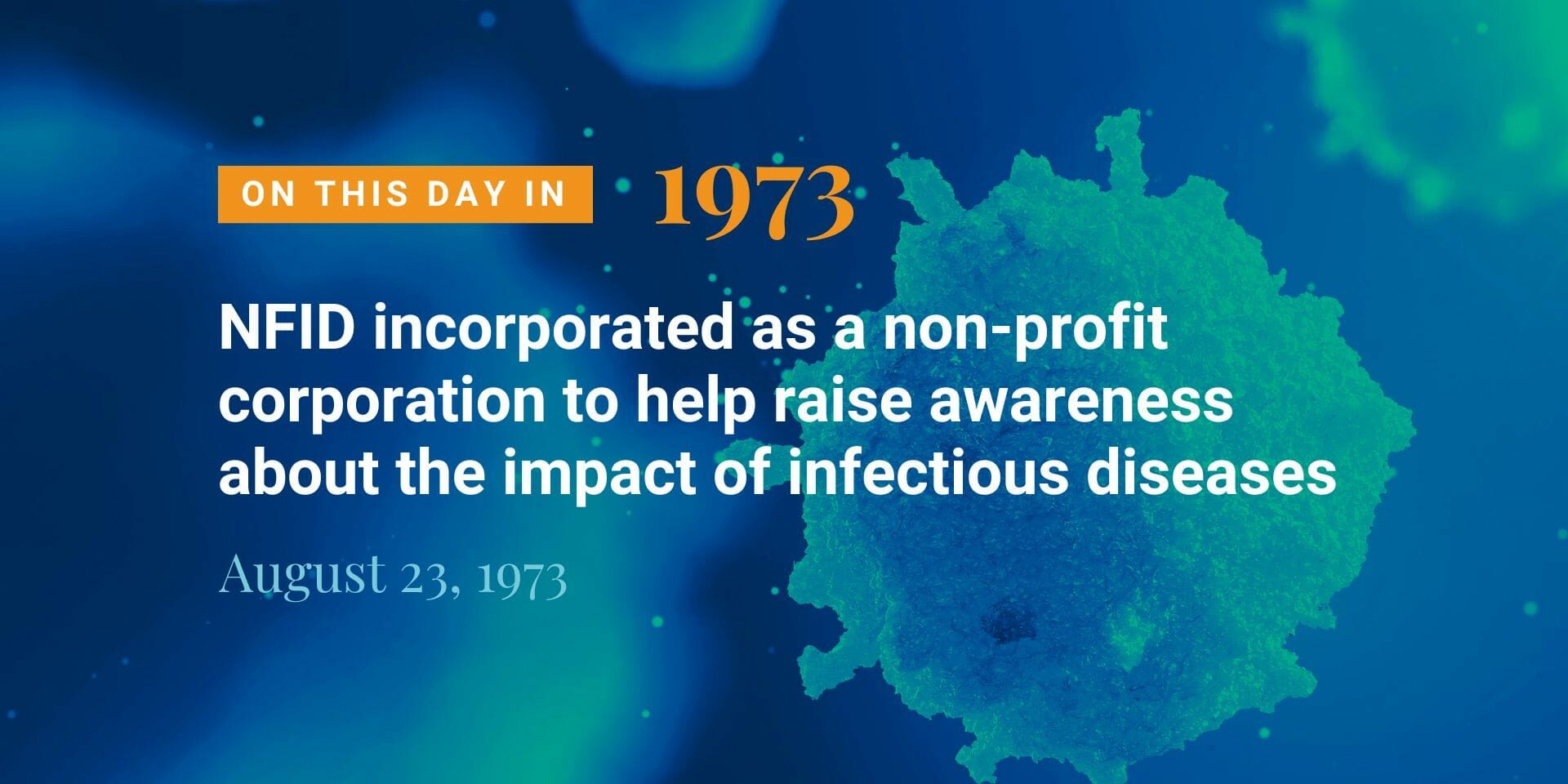
For 50 years, the National Foundation for Infectious Diseases (NFID) has been educating and engaging the public, communities, and healthcare professionals about infectious diseases across the lifespan. NFID was incorporated on August 23, 1973 as a non-profit corporation because a small group of visionaries believed a national organization was needed to raise awareness about the impact of infectious diseases. In honor of the 50th anniversary, NFID is reposting this historical reflection featuring NFID co-founder Richard J. Duma, MD, PhD accepting the 2015 John P. Utz Leadership Award at the NFID Awards Gala.
Good evening. First, I want to thank the NFID Board of Directors for presenting me with the prestigious John P. Utz Leadership Award. I can’t begin to tell you how much it means to me, and how grateful I am to receive it. Jack Utz was my hero and a very close friend. Secondly, I want to thank my wife, Mary Alyce, and my son, Scott, who are both here with me tonight, for inspiring me and for sacrificing so much of their time so that I could complete all the work I needed to do.
In 1967, after completing my fellowship in infectious diseases with Morton N. Swartz, MD, (another hero of mine) at Harvard Medical School and the Massachusetts General Hospital, Jack Utz invited me to join the infectious disease faculty at the Medical College of Virginia (MCV). Over the years, Jack was among the finest gentlemen, scholars, and compassionate physicians I have ever known. I loved working for him—he was inspirational, and he never pushed or harassed. He gave everyone an opportunity to show what they could do. I never heard him say a harsh word to anyone. He was liked by all. He was always quiet and polite, but his staff knew he expected their best, and they gave it to him. He had a special charismatic way of encouraging productivity. It was clear he was a born leader.
Early History of NFID
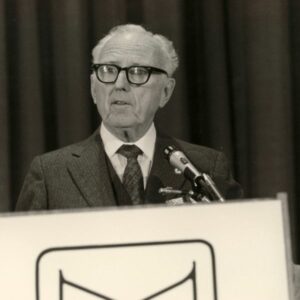
John P. Utz, MD, NFID President, 1973-1976
For the record, I’d like to tell you about some of the early history of NFID. It was in 1973 that NFID was officially founded. However, it was in 1972 that Jack Utz and I were in his office early one morning, sipping coffee, talking about the Washington Redskins, and moaning about how research grant monies were becoming scarce. I complained to Jack that many wealthy organizations were devoted to helping fund research on cancer, heart disease, cystic fibrosis, and many other such problems; but no one seemed to pay any attention to infectious diseases. Jack also wondered why. I said, “I don’t think the public or others know anything about, or care anything about, infectious diseases. When someone asks me what I do for a living, and I say, ‘I’m an infectious disease specialist,’ they invariably seem to think ‘you must be one of those gonorrhea doctors,’ and that seems to be all they know.”
Jack’s face lit up and he asked, “Do you think we could create an infectious disease organization to help support and fund infectious disease research?” “Why not?” I said. And thus, we were off. Jack took his own money and went straight to his lawyer, Charley Reed of Richmond, VA, who told us what we needed to do and how to do it. In no time, Jack selected and invited MCV faculty members to serve as founders and directors. Jack was elected President (our first); I was elected Vice President, and H. Jean Shadomy, PhD, was elected Secretary-Treasurer. We decided right away that the name of the organization should be the National Foundation for Infectious Diseases. (Some have since asked how it could be ‘for’ infectious diseases, when it ought to be ‘against’. They might have been right, but it didn’t seem to stop us!)
Next, we needed a logo. I found a local commercial artist; but he didn’t know what we needed or wanted. I agonized about what a good logo would look like. My then 11-year-old son, who’s seated at my table now, would unwittingly solve my problem. He had a cat who had just delivered kittens, none of whom had yet been named. Since I was familiar with the work of Watson and Crick, I promptly named them empirically: Adenine, Thymidine, Cytosine, Guanine, and Uracil. From this my son quickly learned some biology; my wife was happy; and I had time to keep looking for that perfect logo. The next day, as my son watched me while I was still agonizing, he said, “Dad, why don’t you create a logo like this DNA helix in my book.” “Hmmm, I thought. Why not?” I brought the idea to the commercial artist, he drew it up, and there was our logo, the Double Helix.
Evolution of NFID
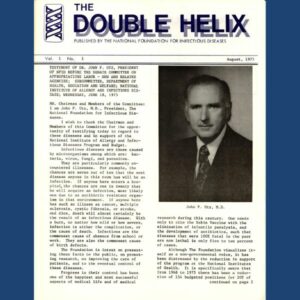 Once we had an official logo, we then created a monthly newsletter, “The Double Helix,” to inform as many people as possible what NFID was all about. As time passed, the newsletter proved to be very successful.
Once we had an official logo, we then created a monthly newsletter, “The Double Helix,” to inform as many people as possible what NFID was all about. As time passed, the newsletter proved to be very successful.
In 1973, Jack left the Medical College of Virginia (MCV) to become dean of the School of Medicine at Georgetown University; and shortly after his departure, I replaced him as chair of the Infectious Disease Division at MCV.
By 1975, NFID was beginning to make headway. President Utz testified on behalf of NFID before the Senate Committee on Appropriations in support of the National Institute of Allergy and Infectious Disease (NIAID). Four years later in 1979, both Dr. Utz and I testified together regarding federal support for NIAID. In both of these instances, we felt that we were successful in making a difference.
Our Board of Directors continued to grow rapidly, and the list of Directors became more and more impressive. In addition to myself as President and Dr. Jay Sanford as Vice President, other Directors included Floyd Denny, MD; Maxwell Finland, MD; Dorothy Horstmann, MD; Thomas Hunter, MD; George Jackson, MD; Smith Shadomy, PhD; John Sherris, MD; John Utz, MD; John Warner, MD; Dennis Watson, PhD; and Paul Wehrle, MD. An outstanding group, to say the least.
In addition, we began to build a Board of Trustees. Initially, this consisted of John Slater, chair and president of Slater Food Service Management and T. Edward Temple, president of Virginia Commonwealth University. In the years to follow, we expanded the Board of Trustees considerably and added Berton Roueche (staff writer for The New Yorker, author of the famous book “Eleven Blue Men,” and twice recipient of the Lasker Journalism Award), Arthur Ashe (winner of the US Open and Wimbledon tennis championships), Dr. James Steele of veterinary and public health fame (and father of a new idea in medicine, referred to as “One Health Initiative”), the Honorable Paul Rogers (a well-known and long-standing congressman from Florida), Eugene Step (president of the Pharmaceutical Division of Eli Lilly), and Dave Butts (arguably the most famous Washington Redskin lineman who ever played NFL football and winner of three Superbowl rings).
Re-elections for the position of NFID President were held every 3 years, and thus my term extended over 14 years, from 1976 to 1990, after which I served as Executive Director from 1991 through 1995. During all this time, many interesting and important things happened as NFID grew.
In 1976, during President Gerald Ford’s administration, swine flu became a threat in the US. Influenza vaccine was rapidly made and widely distributed, the Guillain-Barré syndrome reared its ugly head, and people everywhere became frightened about vaccines. Virtually no one would stand up and preach the importance of vaccination. Even the government seemed to have run for cover. However, NFID proudly stepped up to the plate and did its best to encourage the public not to surrender.
Since that time, multiple national conferences on influenza and other vaccines were held, and every year afterwards NFID urged the timely use of influenza vaccines and, when necessary, prescription flu medications, stressing the importance of prevention or early treatment of the disease.
In 1979, NFID first began to raise money for Young Investigator Research Grants. Eleven of 30 applicants received $4,000 each; in 1981, 4 of 14 applicants were each given $14,000 stipends. This philanthropy continued over the years.
In 1980, co-sponsored by the Centers for Disease Control and Prevention (CDC), NFID undertook organizing the 2nd Decennial International Conference on Nosocomial Infections, a 5-day conference held in Atlanta. This conference, held every 10 years, proved to be well received, and 10 years later, in 1990, NFID and CDC sponsored the 3rd Decennial International Nosocomial Conference, with many physicians and nurses from around the world in attendance.
On January 3, 1985, NFID was delighted to receive a personally signed letter from President Ronald Reagan lauding NFID for the great job it was doing in alerting the US population about pneumonia and influenza and encouraging the use of vaccines for protection. Later that same year on November 21, NFID hosted a press conference in Washington, DC on influenza and pneumonia, involving some of the leading scientists and physicians in the country: namely, James B. Wynngaarten, MD, director of the National Institutes of Health (NIH); Anthony S. Fauci, MD, director of NIAID; and David S. Fedson, MD, head of the Division of Medicine at the University of Virginia. At the conference, Wynngaarten strongly endorsed the adult immunization program of NFID.
In 1988, NFID introduced its 1st annual Maxwell Finland Award, honoring Surgeon General C. Everett Koop as the first ever recipient. In the same year, NFID worked with CDC to create a coalition of 65 organizations in support of the Surgeon General’s goals for increasing the use of adult immunizations. Walter A. Orenstein, MD (who later became NFID President) worked with us on this campaign, contributing significantly to its success. It was then that Congress acted, as Medicare first began to pay for flu shots (insurance would not), and Congress passed legislation declaring the week of October 24th as National Adult Immunization Awareness Week.
The following year, in 1989, NFID and the American Society of Microbiology (ASM), developed and conducted the 4th National Forum on AIDS and Hepatitis B in Washington, DC, with more than 500 scientists in attendance. Louis W. Sullivan, MD, Secretary of Health and Human Services, gave the opening keynote address. This was followed a year later with the 5th National Forum on AIDS, Hepatitis, and Blood-Borne Diseases, in Atlanta, conducted by NFID, CDC, and NIAID.
In 1993, President Clinton commended NFID for raising awareness about hepatitis prevention. Ruth K. Westheimer, PhD (Dr. Ruth), who was considered America’s premiere sex educator, launched a nationwide television public service program on behalf of NFID, as we had revealed that only 12% of the US population knew that hepatitis B could be contracted through sexual activity. Since hepatitis B frequently struck adolescents and young adults age 15 to 39 years, NFID concentrated on a nationwide teaching program for college students about hepatitis B infections and the approved vaccine. Dr. Ruth and I addressed 400+ college editors. Afterwards, when these students returned to their institutions, many of them published articles expressing the importance of hepatitis B prevention in their school newspapers. Also, we convinced health directors at more than 100 colleges to join the Hepatitis B Campus Prevention Program.
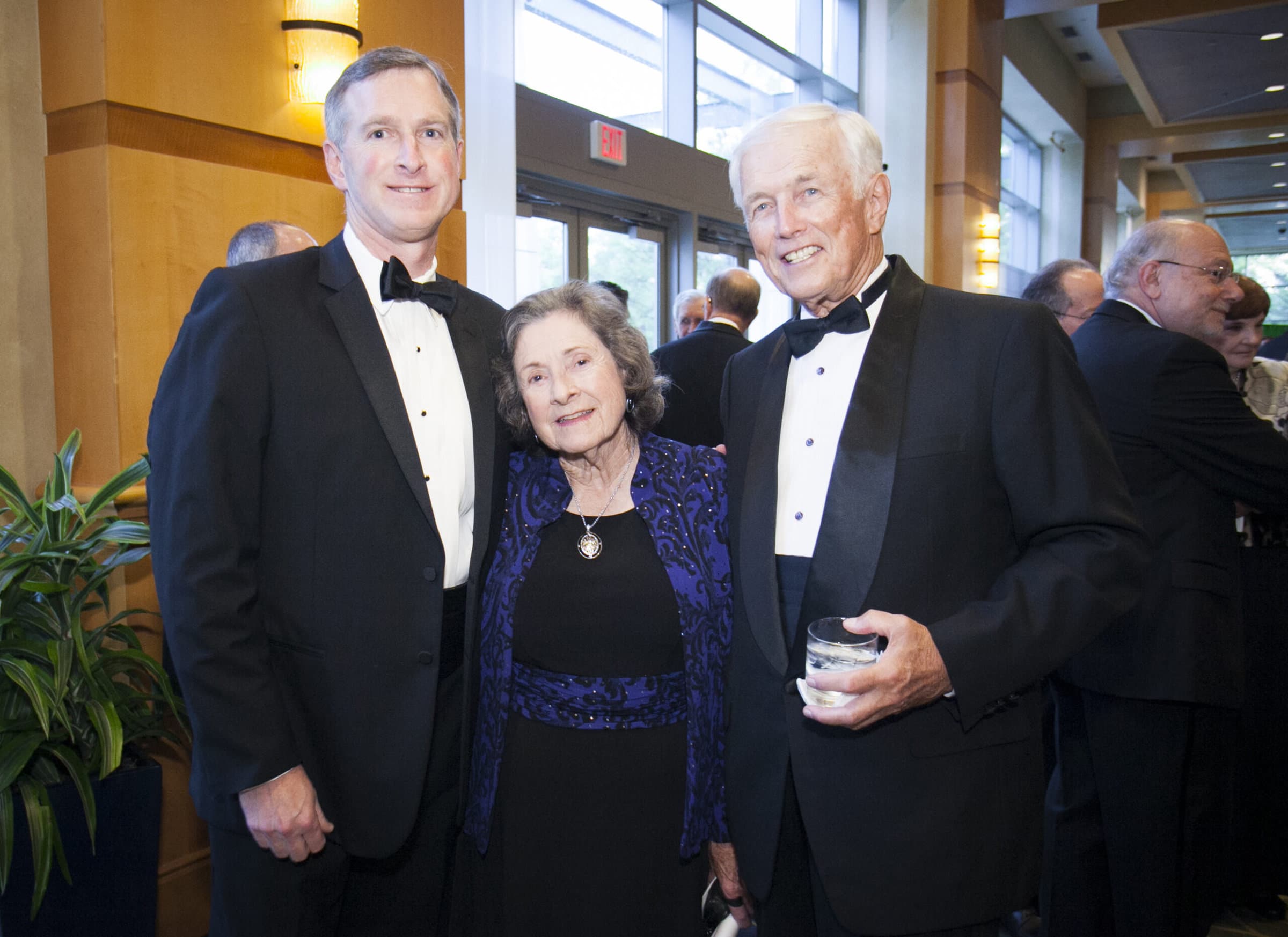 During all this time from 1981 on, NFID, like many other organizations, needed additional funding. Monies were secured through NFID sponsorship of benefit golf tournaments wherever and whenever infectious disease professionals were meeting, including those sponsored by the Infectious Diseases Society of America (IDSA) and Interscience Conference on Antimicrobial Agents and Chemotherapy (ICAAC). This worked well, in that before each event, 50-60 doctors and/or researchers would play and each would contribute $250. In addition, many pharmaceutical and medical corporations also contributed to these tournaments and to our cause. To this day, when I meet someone at an ICAAC or IDSA meeting, they still rush up to me and ask, “Dick, when are we going to have another golf tournament?”
During all this time from 1981 on, NFID, like many other organizations, needed additional funding. Monies were secured through NFID sponsorship of benefit golf tournaments wherever and whenever infectious disease professionals were meeting, including those sponsored by the Infectious Diseases Society of America (IDSA) and Interscience Conference on Antimicrobial Agents and Chemotherapy (ICAAC). This worked well, in that before each event, 50-60 doctors and/or researchers would play and each would contribute $250. In addition, many pharmaceutical and medical corporations also contributed to these tournaments and to our cause. To this day, when I meet someone at an ICAAC or IDSA meeting, they still rush up to me and ask, “Dick, when are we going to have another golf tournament?”
After my retirement in 1995, I continued to enjoy serving and contributing to NFID. I’ve been with many of you and the organization continuously for 40 plus years, more than half my life, and I’ve enjoyed every minute of it. I believe NFID is a wonderful organization whose skills and contributions are badly needed by humanity. NFID has come a long way, and I believe it will march much further. It is still in its early stages of development.
Again, I sincerely thank you and all those who work for NFID, for presenting me with the 2015 John P. Utz Leadership Award, which I shall cherish forever.
Richard J. Duma, MD, PhD
May 5, 2015
Join the NFID 50th Anniversary Celebration
 The NFID 50th Anniversary Gala will take place on September 14, 2023, at the Willard InterContinental Washington, DC, to celebrate 50 years of education, prevention, and impact, recognizing the work of NFID and the inspirational public health heroes who have helped protect the lives of millions. NFID will also launch the new 1973 Society, to recognize major donors who support a shared vision of healthier lives for all through effective prevention and treatment of infectious diseases.
The NFID 50th Anniversary Gala will take place on September 14, 2023, at the Willard InterContinental Washington, DC, to celebrate 50 years of education, prevention, and impact, recognizing the work of NFID and the inspirational public health heroes who have helped protect the lives of millions. NFID will also launch the new 1973 Society, to recognize major donors who support a shared vision of healthier lives for all through effective prevention and treatment of infectious diseases.
Purchase the NFID 50th Anniversary Commemorative Book looking back at the history of NFID and celebrating the trailblazing efforts of NFID leaders and public health heroes over the past 5 decades.
To join the conversation and get the latest news on infectious diseases, follow NFID on Twitter, like us on Facebook, follow us on Instagram, visit us on LinkedIn, listen and subscribe to the Infectious IDeas podcast, and subscribe to receive future NFID Updates.
Related Posts
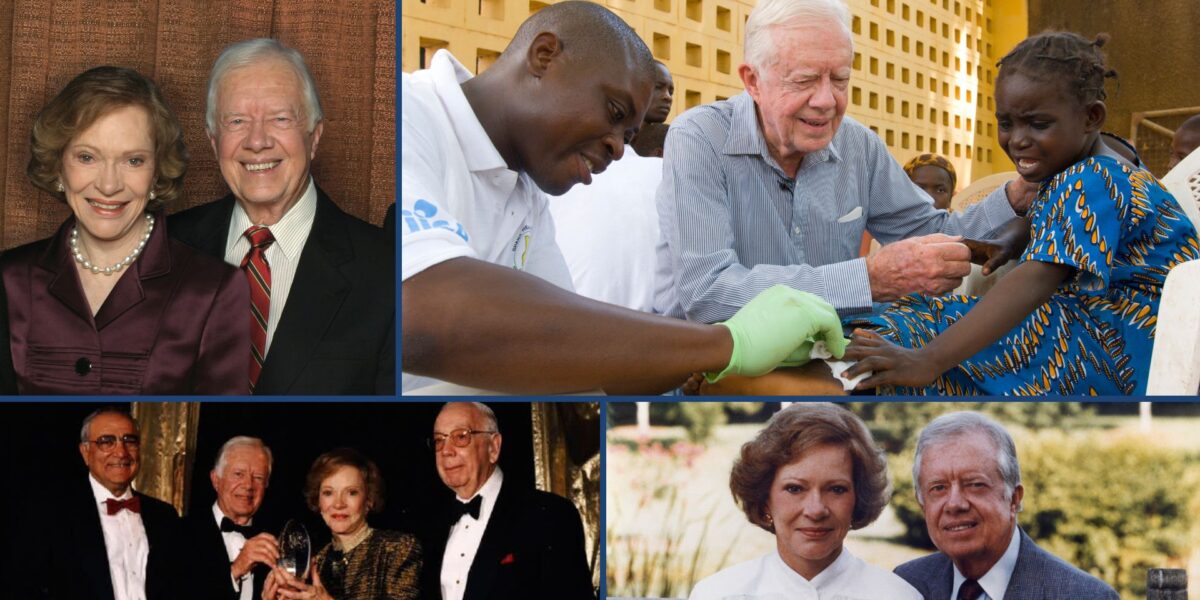
Remembering Jimmy Carter
The annual Jimmy and Rosalynn Carter Humanitarian Award honors the former president’s lifelong commitment to public service and global health
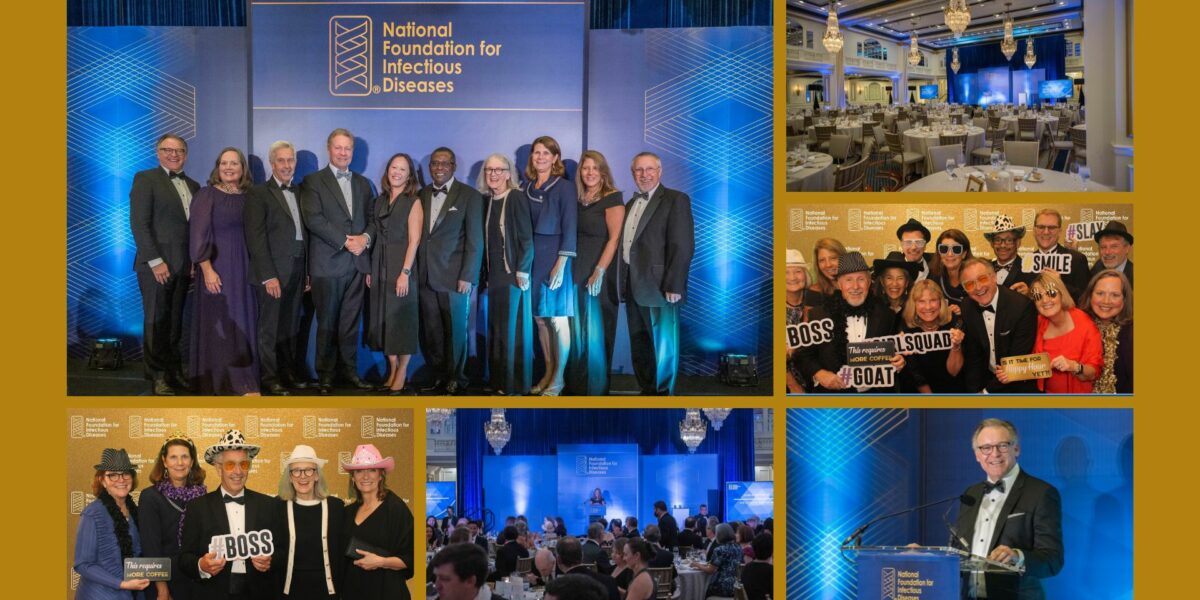
A Star-Studded Celebration of Public Health Heroes
At the 2024 Awards Gala and Silent Auction, the National Foundation for Infectious Diseases (NFID) recognized the inspiring accomplishments of 3 outstanding public health leaders: Seth F. Berkley, MD; Ighovwerha (Igho) Ofotokun, MD, MSc; and Grace M. Lee, MD, MPH …
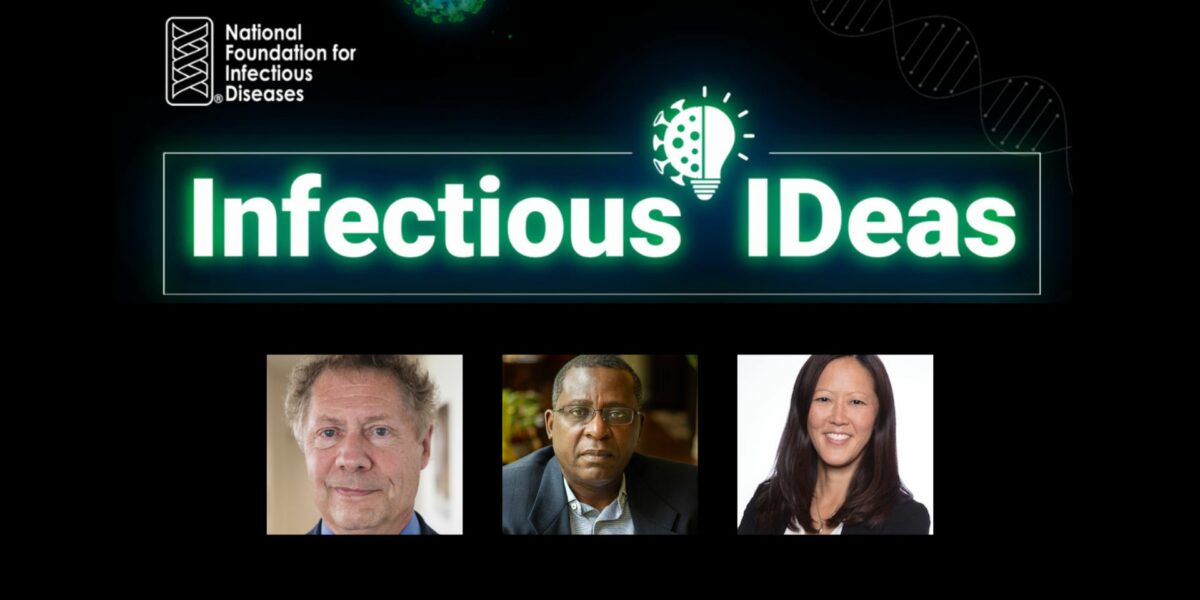
Insights from Inspiring Public Health Heroes
Recipients of the prestigious 2024 NFID awards share their inspiring insights on the NFID podcast, Infectious IDeas …
